#6th century CE
Text

Hunting scene
* Carthage, Tunisia
* 5th or 6th century CE
* British Museum
London, July 2022
#Roman#mosaics#Tunisia#5th century CE#6th century CE#animals#dog#hunting#boar#British#Museum#my photo
42 notes
·
View notes
Text
6th grade is probably my favorite grade to teach because they're the perfect combination of relatively enthusiastic and "just now starting to learn not to take things too seriously" without typically getting "too cool" for anything we do. as a result they're the best kids to read marcus aurelius to because they still think it's fun and will quiet down for it while also finding some of the things marcus aurelius says amusing. the best part about it though is that if i accidentally get distracted and forget to give them their dose of 2nd century CE stoic philosophy they call me out on it because they really want to hear what he has to say
what im saying is the other day in class i may have had a small group of 11-12 year olds yelling "WHAT ABOUT MARCUS" at me because i forgot to read them a passage from the meditations at the start of class
#tagamemnon#marcus aurelius#sarah teaches latin#probably the best teaching decision of my life to start out class with marcus#queueusque tandem abutere catilina patientia nostra
851 notes
·
View notes
Text
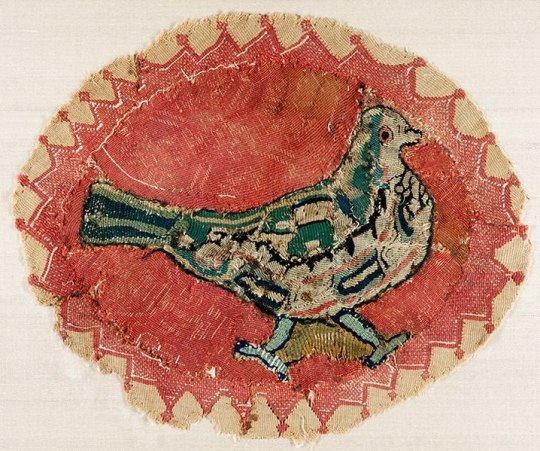
Textile roundel with dove, Egypt, 5th-6th century CE.
Wool on linen, 9 x 10.8 in. McMullen Museum of Art, Boston College, 5th-6th century CE, McMullen Museum of Art, Boston College.
1K notes
·
View notes
Text


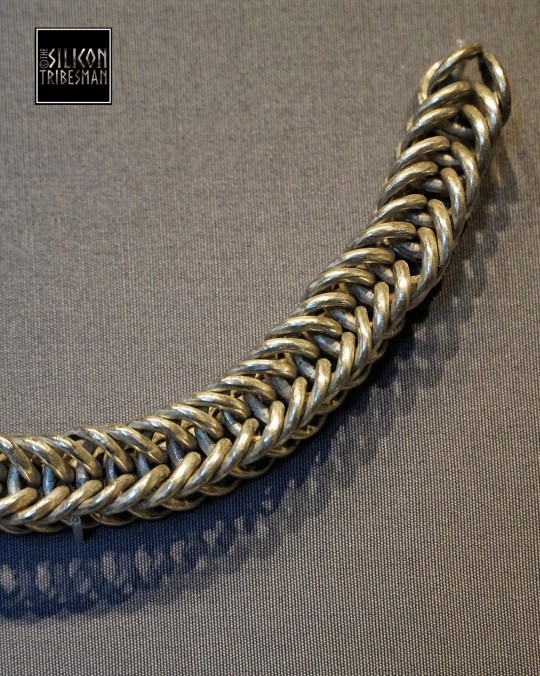

Silver Chain from The Gaulcross Hoard, 5th or 6th Century CE, The National Museum of Scotland, Edinburgh
#silver#silver chain#chainwork#archaeology#metalwork#metalworking#relic#artefact#ancient living#ancient craft#ancient cultures#design#chain#Scotland#Edinburgh
250 notes
·
View notes
Text


Amulet Carved in Intaglio (Incised)
Byzantine (Egypt), 6th–7th century CE
Inscriptions identify the subject of this amulet as the Woman with the Issue of Blood (Mark 5:25–34; Luke 8:43–48). On the reverse a woman stands in the orant (prayer) pose. Hematite was believed to stop the flow of blood and was a favorite medium for amulets related to female reproductive health and menstrual problems.
159 notes
·
View notes
Text
Medieval Hermitage atop Katskhi Pillar, in Georgia (South Caucasus), c. 800-900 CE: this church was built during the Middle Ages; it sits atop a limestone column that has been venerated as a "Pillar of Life" for thousands of years
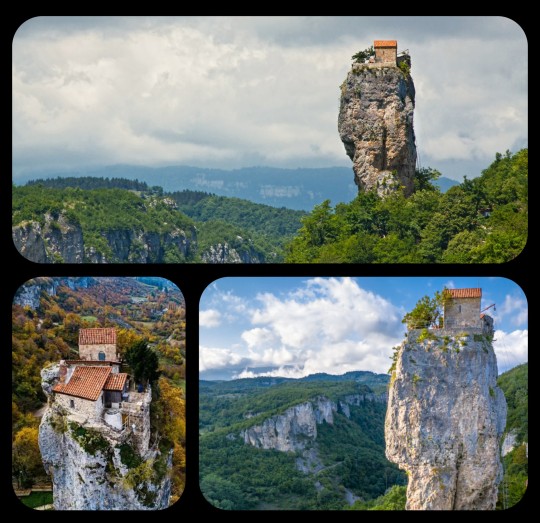
Known as Katskhi Pillar (or Katskhis Sveti), this enormous block of limestone is located in western Georgia, about 10km from the town of Chiatura.
The church that stands atop Katskhi Pillar was originally constructed during the 9th-10th century CE. It was long used as a hermitage for Stylites, who are sometimes referred to as "Pillar Saints" -- Christian ascetics who lived, prayed, and fasted atop pillars, often in total isolation, in an effort to bring themselves closer to God. This tradition originated in Syria during the 5th century CE, when a hermit known as Simeon the Elder purportedly climbed up onto a pillar and then stayed there for nearly 40 years, giving rise (no pun intended) to the Stylites. Stylitism managed to survive for about 1,000 years after its inception, but it gradually began to die out during the late Middle Ages, and by the end of the 16th century, it had essentially gone extinct.
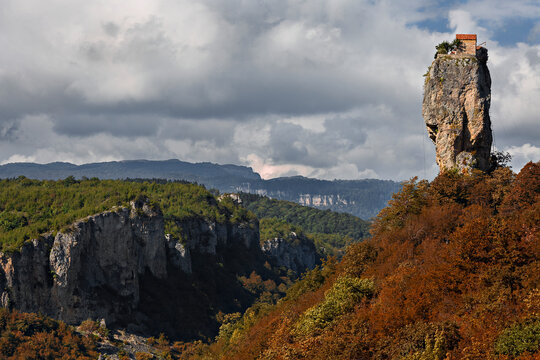
Researchers don't really know how the monks originally gained access to the top of Katskhi Pillar, or how they were able to transport their building materials up to the top of the column. There's evidence that the Stylites were still living at Katskhi Pillar up until the 15th century, but the site was then abandoned shortly thereafter. This was the same period in which Georgia came under Ottoman rule, though it's unclear whether or not that may have played a role in the abandonment of the site.
The hermitage continued to lay abandoned for nearly 500 years after that. No one had been able to gain access to the top of the pillar, and very little was even known about the ruins that lay scattered at the top, as knowledge about the site's origin/history was gradually lost. There are many local legends that emerged as a way to fill in those blanks.
The site was not visited again until July 29th, 1944, when a mountaineer finally ascended to the top of the column with a small team of researchers, and the group performed the first archaeological survey of the ruins. They found that the structure included three hermit cells, a chapel, a wine cellar, and a small crypt; within the crypt lay a single set of human remains, likely belonging to one of the monks who had inhabited the site during the Middle Ages.
A metal ladder (the "stairway to Heaven") was ultimately installed into the side of the pillar, making it much easier for both researchers and tourists to gain access to these ruins.

The hermitage at the top of Katskhi Pillar actually became active again in the early 1990's, when a small group of monks attempted to revive the Stylite tradition. A Georgian Orthodox monk named Maxime Qavtaradze then lived alone at the top of Katskhi Pillar for almost 20 years, beginning in 1995 and ending with his death in 2014. He is now buried at the base of the pillar.
While the hermitage is no longer accessible to the public, and it is currently uninhabited, it's still visited by local monks, who regularly climb up to the church in order to pray. There is also an active monastery complex at the base of the pillar, where a temple known as the Church of the Simeon Stylites is located.

The Church of the Simeon Stylites: this church is located within an active monastery complex that has been built at the base of the pillar; several frescoes and religious icons decorate the walls of the church, and a small shrine containing a 6th century cross is located in the center
There are many lingering questions about the history of Katskhi Pillar, particularly during the pre-Christian era. There is at least some evidence suggesting that it was once the site of votive offerings to pagan deities, as a series of pre-Christian idols have been found buried in the areas that surround the pillar; according to local tradition, the pillar itself was once venerated by the pagan societies that inhabited the area, but it's difficult to determine the extent to which these claims may simply be part of the mythos that surrounds Katskhi Pillar, particularly given its mysterious reputation.
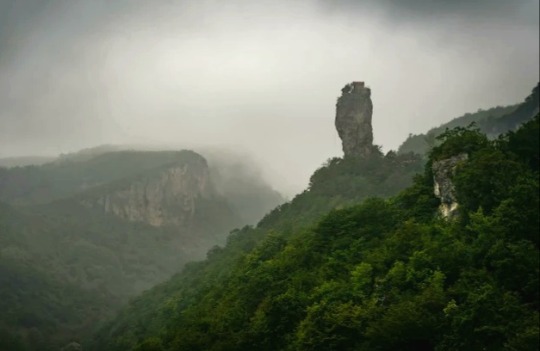
Sources & More Info:
BBC: Georgia's Daring, Death-Defying Pilgrimage
CNN: Katskhi Pillar, the Extraordinary Church where Daring Monks Climb Closer to God
Radio Free Europe: Georgian Monk Renews Tradition, Lives Atop Pillar
Architecture and Asceticism (Ch. 4): Stylitism as a Cultural Trend Between Syria and Georgia
Research Publication from the Georgian National Museum: Katskhi Pillar
Journal of Nomads: Katskhi Pillar, the Most Incredible Cliff Church in the World
Georgian Journal: Georgia's Katskhi Pillar Among World's 20 Wonderfully Serene and Secluded Places
#archaeology#history#anthropology#artifact#medieval architecture#medieval church#Stylites#asceticism#georgia#sakartvelo#katskhi pillar#religion#travel#monastery#paganism#caucasus#medieval europe#christianity#strange places
447 notes
·
View notes
Text
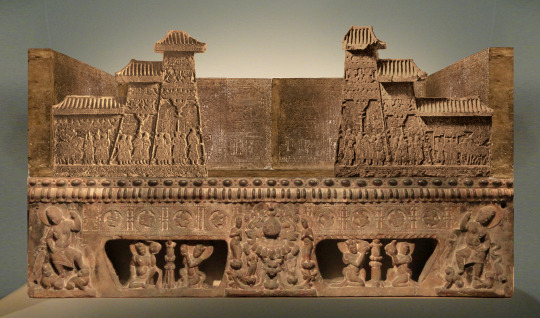


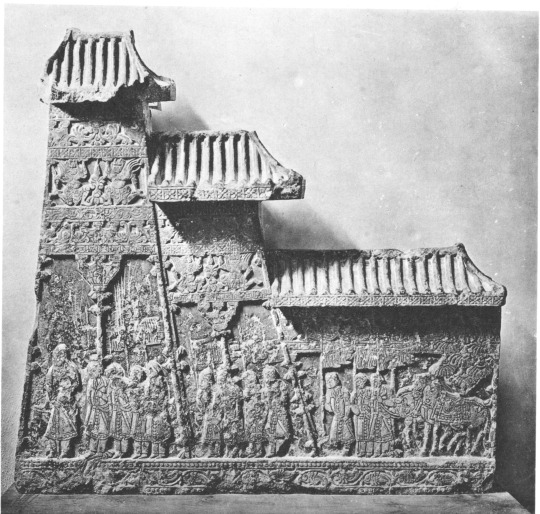







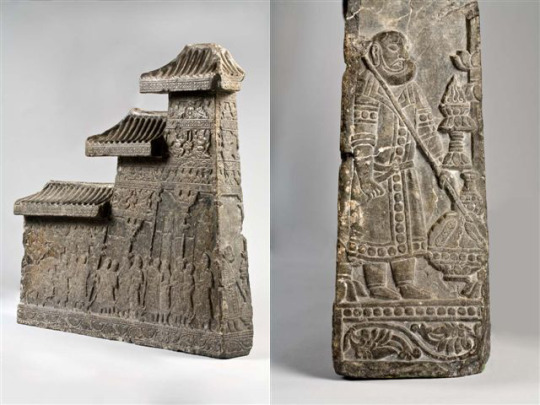
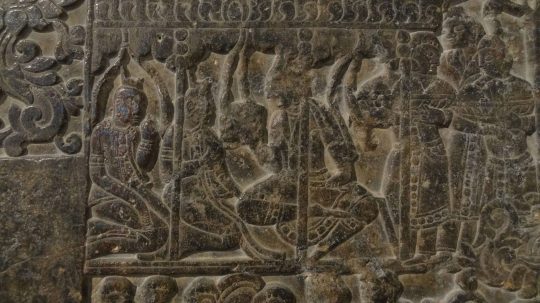

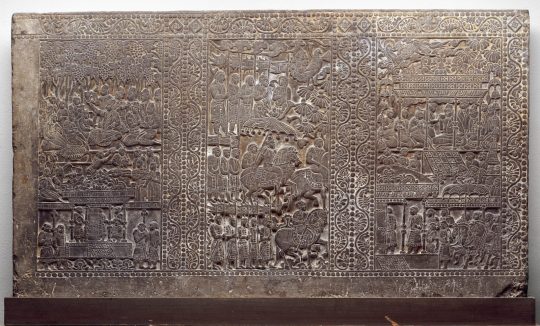

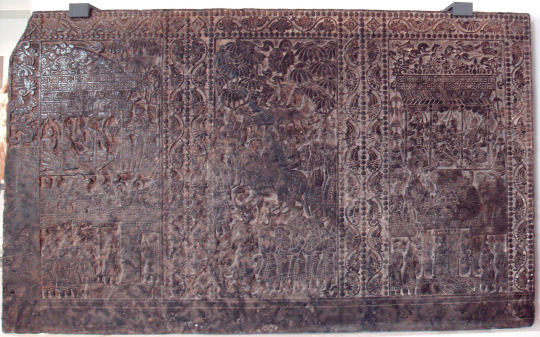


Anyang funerary bed 550-577 CE
"The Anyang funerary bed (Chinese: 安阳北齐石棺), also known locally as the Bed of Ts'ao Ts'ao (from the Chinese hero Cao Cao), is a Chinese funerary couch belonging to a Sogdian merchant and official active in China in the 6th century CE. The tomb was discovered in 1911, and the components of the funerary bed were dispersed among various museums in the world after being offered on the art market. It is thought the funerary bed was excavated in Anyang (ancient Zhangdefu), capital of the Northern Qi dynasty. It is stylically dated to the Northern Qi dynasty (550–577 CE).
There are eight known components of this funerary monument: a dais and two cornices with notched ends, now in the Freer Gallery of Art, a pair of gates, now in the Museum of East Asian Art (Cologne), two rectangular slab in the Boston Museum of Fine Arts, and one slab in the Guimet Museum in Paris.
The funerary bed is important to Sogdian art and culture, as it is decorated with musicians in the typical Sogdian attire and with a Buddhist scene including deities. The ensemble of Sogdian musicians includes two lute players, a flutist, two drummers and a cymbal player, as well as two dancers. Two stretchers once attached to the bed showed what the Chinese called a huxuan wu (胡旋舞), i.e. "Sogdian Whirl dance", which was enormously popular in China, and appears on many Chinese tombs. Tang sources confirm the dance's popularity. It was performed at court by the Tang Chinese emperor Xuanzong and his favorite concubine.
Gustina Scaglia was the first to recognize in 1958 that the pieces scattered in several museums belonged to a single funerary couch made for a member of the Sogdian community in China.
The owner and exact history of the owner of the tomb remain unknown, as the epitaph has been lost.
Sogdian stone funerary beds disappear during the subsequent Tang dynasty period, even though Sogdian influence was probably even more significant in China at that time, possibly due to Imperial restrictions regarding funerary practices."
-taken from Wikipedia
#sogdiana#ancient history#art#antiquities#history#sculpture#statue#museums#archaeology#ancient china#antiquity#anthropology
224 notes
·
View notes
Photo
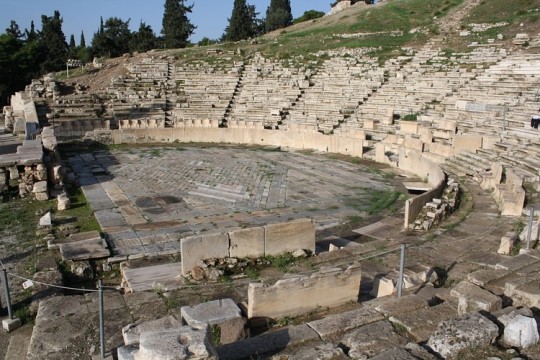
Theatre of Dionysos Eleuthereus
The theatre of Dionysos Eleuthereus on the south slope of the acropolis of Athens was first built in the 6th century BCE. Modified and expanded over the centuries, it is the oldest Greek theatre and is the site where some of the most famous Greek plays from antiquity were first performed.
Early Form
The theatre was part of a wider sanctuary dedicated to Dionysos Eleuthereus from the Archaic period. The cult to the Greek god of wine, merriment, and theatre was brought to Athens via the nearby deme of Eleutherai, although it can be traced back to Mycenaean times. A temple to Dionysos was first constructed by Peisistratos in the 6th century CE, and a circular area of tramped earth nearby was reserved for religious ceremonies where spectators took their seats on the hillside. Eventually this space evolved into a purpose-built theatre where Greek comedies and tragedies were performed, themselves evolved from earlier religious practices which included singing, wine drinking, animal sacrifices, and the wearing of masks. The climax of the celebrations was the Great Dionysia held each year in March/April, during the month of Elaphebolion, where the most famous playwrights such as Euripides, Sophocles, and Aristophanes presented their plays in competition.
Continue reading...
114 notes
·
View notes
Text


Colossal 5th-6th century CE statue of the Buddha found in southern Tajikistan in 1959 by the Russian archaeologist Boris Litvinskiy, during the excavation of the Buddhist temple on the Ajina Tepe, in the valley of the Vakhsh River, near the city of Bokhtar. Commonly called "Sleeping Buddhas", this pose actually depicts the death of Shakyamuni Buddha in what is called his mahaparinirvana.
74 notes
·
View notes
Text
What do Shax and a 30-year-old Sandman comic have in common? Puns. The answer is always puns.
While I've recently revealed Shax does actually know how to spell, (she's just really old), the "angle" message Shax throws through the window to demand the "angel" one was a little trickier, because it's not Middle English, or even Old French, it's probably the oldest pun in Good Omens... it's latin.

Good Omens Season 2, Episode 5, 2023
Fortunately, a time travelling Neil Gaiman left answers for us in his 1995 Sandman special "Sandman midnight theatre." See for yourself.

Sandman Midnight Theatre, Neil Gaiman, Matt Wagner, Teddy Kristiansen, 1995
"Still, they have some illuminated manuscripts in their library which throw fascinating light on early church history. "Not angels, but angles" eh? I've been angling for permission to browse through their manuscript collection for yonks."
Appropriate for an English reverend to be curious about "Angels and not Angles". It's THE earliest christian pun, attributed to Pope Gregory the Great in the 6th century CE.

Oxford reference essential quotations
It comes from a historical account of the pope walking through a market in Rome, and seeing some exotic slave children (i.e. fair hair and blue eyes, and light skin) from what is now the England, and asking where they were from. The master replied that they were "Angles" (Angli in latin) and the pope declared them to be "Angels" (Angeli) instead, which, in latin at that time would have been a pun.
This history from Bede actually influenced a lot of the christian world, so we could conceivably make the point that fair blonde and blue eyed angels comes from the idea that they looked liked the English (who were not christian, but pagan at the time of being newly conquered). Aziraphale's looks in the originsl Good Omens are probably a direct result of the lineage in art of this 1,500 year old pun.
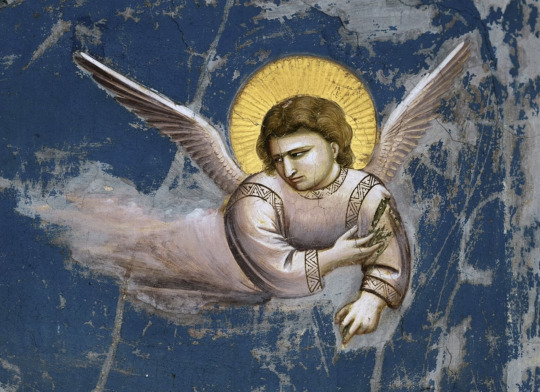
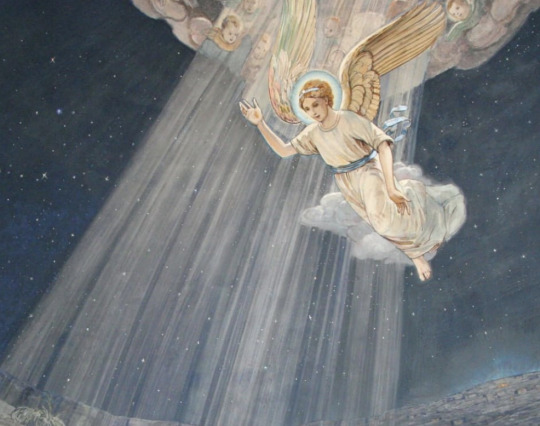

Depictions of angels, 1100 years apart
Which raises the question: if Shax is asking for the Angel Gabriel with her note, the pun doesn't make any fucking sense.
Jon Hamm plays Gabriel as an "American", specifically not English like the rest of the cast. He does have blue eyes, but as far as Shax is concerned, Gabriel's eyes are violet, not really a human colour. Shax could just actually be stupid (I guess?) and not realize that in modern English that constitutes a mistake (boring), or that Americans succeeded in 1776 (hilarious). But here's a quirkier theory: Shax knows what she's talking about, and she's gunning for Maggie.
If you look really closely, demons show up and start hanging around the street earlier in the ball than you would guess. Once a fair number have amassed, they stay waiting for Shax to lead them. However, even though she hasn't shown up yet, they eagerly chase Maggie down the street from her shop. They're only stopped by Crowley, and Maggie gets safely into the ball.

Once inside, she has quite a stunning change of costume, highlighting her blonde hair and blue eyes:

There's so much more evidence to suggest that Maggie isn't really a normal human, but this post is long enough. What I will say is that it's subtle, but once the demon attack really gets going (no thanks to Maggie), Shax and the other demons never look for Jim once, even when he leaves the mezzanine. They concentrate all their efforts on Aziraphale, Maggie and Nina, and never mention Gabriel again.
While Maggie is a Scottish name, and she clearly has some links to Scotland if a random pub in Edinburgh is buying records from her in Soho, she does have a distinctly English accent, and lest we forget...

———————————————
thanks as always to @embracing-the-ineffable and @thebluestgreen for the tasty links and sounding board.
#good omens meta#good omens 2#art director talks good omens#go season 2#go meta#good omens season two#good omens season 2#good omens#go2#good omens prime#nina and maggie#anthony j crowley#jimbriel#crowley x aziraphale
76 notes
·
View notes
Text






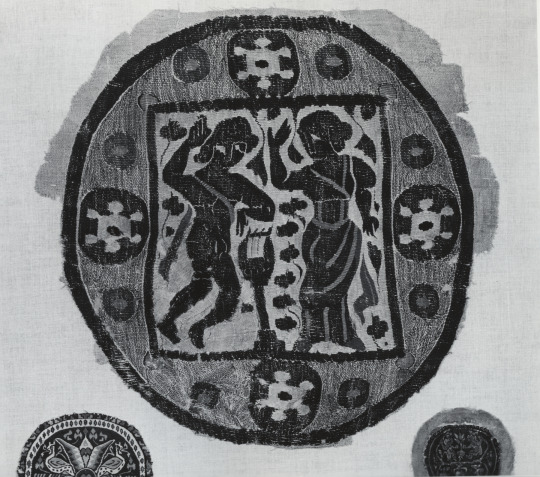









twin fantasy (csh, 2018) / reflektor (arcade fire, 2013) web weave
we are put on this earth solely to identify patterns and boy am i identifying the shit out of these patterns. guarantee there are more parallels between these two albums about parallelism but i haven't found them yet
orpheus and eurydice (auguste rodin, 1893) / famous prophets (stars), car seat headrest / awful sound (oh eurydice), arcade fire / a photo of will toledo from the music video for nervous young inhumans / supersymmetry, arcade fire / famous prophets (stars), car seat headrest / egyptian tapestry roundel with orpheus and apollo, 5th–6th century CE / famous prophets (stars), car seat headrest / reflektor, arcade fire / cover for twin fantasy / famous prophets (stars), car seat headrest / awful sound (oh eurydice), arcade fire / promotional material for reflektor / twin fantasy (those boys), car seat headrest / it's never over (hey orpheus), arcade fire / orpheus and eurydice (auguste rodin, 1893)
#used a fuckton of famous prophets and oh eurydice because those two really spell it out#reflektor#arcade fire#twin fantasy#car seat headrest#famous prophets (stars)#symmetry#web weave#web weaving#webweave
156 notes
·
View notes
Text

Hunting scene
* Carthage, Tunisia
* 5th or 6th century CE
* British Museum
London, July 2022
#Roman#mosaics#Tunisia#5th century CE#6th century CE#hunting#animals#bird#ancient#art#British Museum#my photo
50 notes
·
View notes
Text

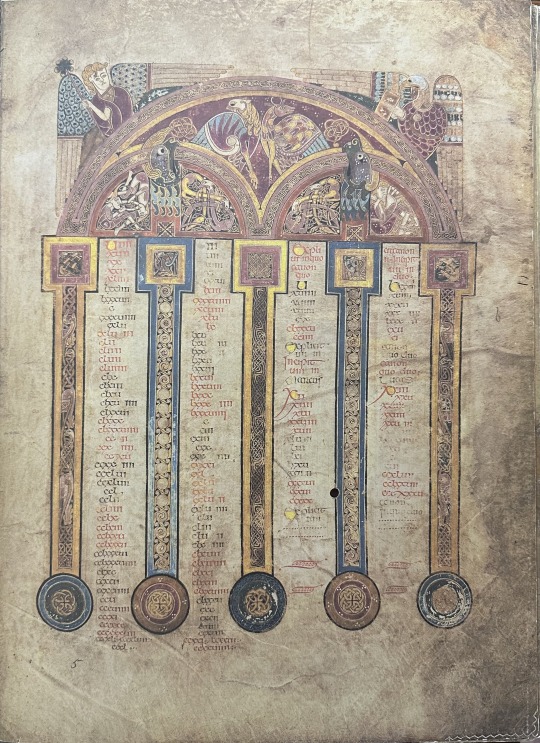



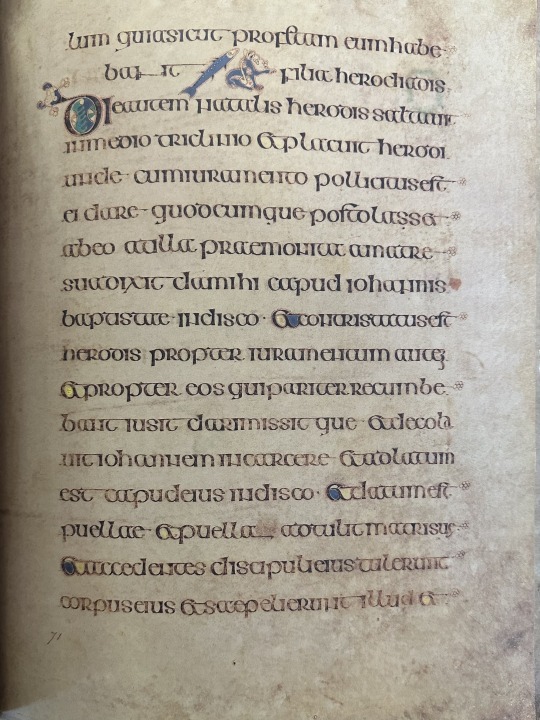

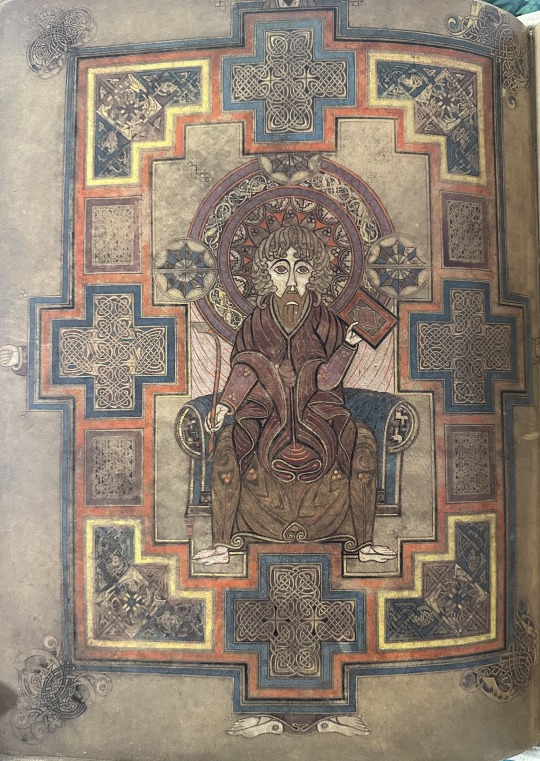
Manuscript Monday
This Insular manuscript was created by Irish Catholics, who were well known to be stewards of knowledge and artistic ability during the ‘dark ages’ of the 6th-10th centuries CE. In particular, the Insular style consists of flattened, two-dimensional figures of people and animals accompanied by elaborate ornamentation throughout its pages. We often see interlacing designs and Celtic knots within this ornamentation and the proportions and rendering of the figures and architecture seen throughout the manuscript are not always realistic. For example, in the Book of Kells, produced around 800 CE by Irish monks in Scottish west-coast island of Iona, the columns holding up the arches on canon tables are circular and would lack structural integrity in the real world, for obvious reasons. We can see the flattened, strange rendering of figures on folio 32v (shown below), which is a depiction of Christ Enthroned. Christ’s knee is lifted to hold up the codex in his hand, but the placement of his knee is anatomically incorrect. We also see the flatness of the figure and the inclusion of ornamentation throughout the image, and we can see even more of this decoration on carpet pages throughout the manuscript. The Insular style was not only limited to manuscripts but was also used in metal objects like broaches, chalices, sculpture, and architecture which are also said to have been inspiration for Insular style manuscripts.

Our copy of the facsimile of the Book of Kells was published by the Faksimile Verlag of Luzern, Switzerland in 1990 and includes a separate volume with commentary edited by the noted Trinity College librarian Peter Fox. If you have the urge to see the original Book of Kells, it is shown in the Trinity College Library in Dublin. The library shows two folios of the manuscript at a time and changes the pages shown every twelve weeks.
View more Manuscript Monday posts.
– Sarah S., Special Collections Graduate Intern
#manuscript monday#book of kells#ireland#kells#illuminated manuscripts#manuscripts#facsimiles#Faksimile Verlag#iona#insular#insular style#carpet page#canon table#trinity college#Peter Fox#trinity college library#dublin#Sarah S.
67 notes
·
View notes
Text
Alec and Jane of the Volturi guard are said to have been children from England who were changed sometime prior to or around 800 CE (The Twilight Saga: The Twilight Illustrated Guide, p. 166). They were changed by Aro after “they were accused as witches and condemned to be burned [sic] at the stake” (p. 167).
As far as we know, Anglo-Saxon England (which wasn’t even majority Christian until the 6th-7th century) didn’t have witch trials. Anglo-Saxon English witchcraft usually concerned the healing arts, rather than pacts with Satan, and didn’t have much to do with lucky/unlucky children. Britain didn’t even have witch trials until the 1400s, and witches in British territories were not burnt unless they were additionally charged of a crime for which the punishment was burning—British people were hanged for witchcraft.
Moving Alec and Jane to central Europe (where witches would eventually be burnt, but not until the 1400s) for roughly the same time period doesn't work, either, as it would have been largely under the Holy Roman Empire, which, according to the canon Episcopi (c. 900 CE), didn't even believe in witches at the time.
FFS
55 notes
·
View notes
Text
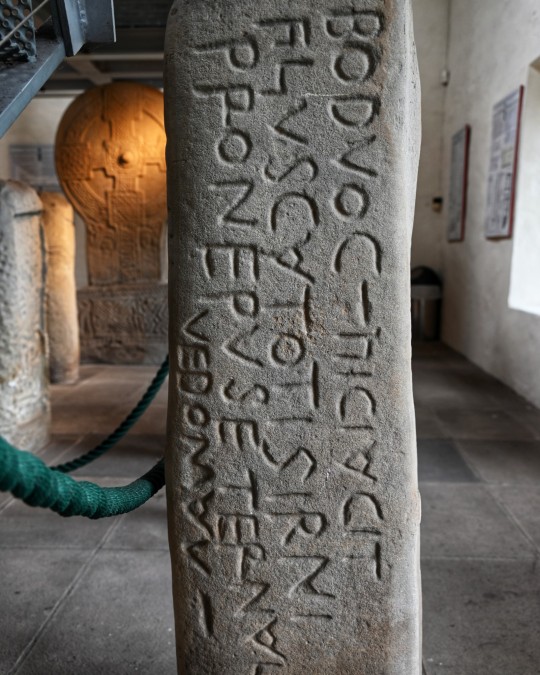
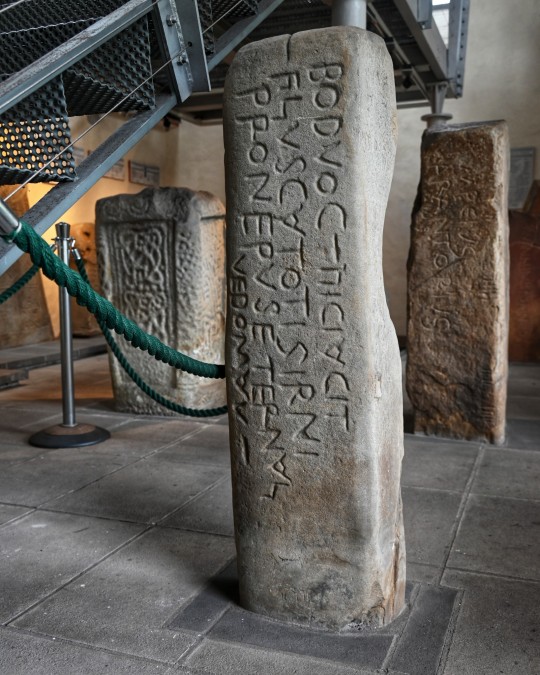

'The Bodvoc Stone' 6th Century CE Inscription Stone, Margam Stones Museum, nr. Port Talbot, Wales
#sacred stones#ancient religion#early belief#stonework#carved stone#relic#artefact#wales#margam stones#archaeology#ancient culture#ancient craft
543 notes
·
View notes
Text

Bowl with Wheel-Cut Facets
Iran, Sasanian, ca. 6th–7th century CE
92 notes
·
View notes